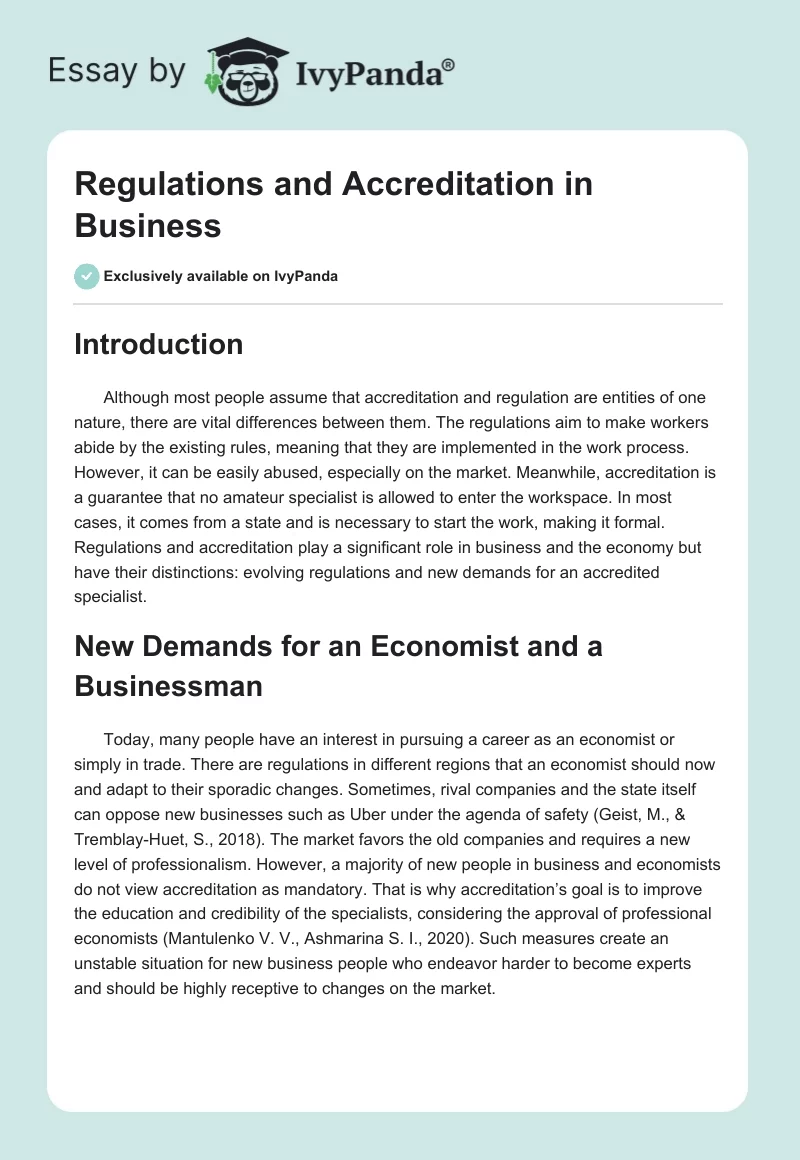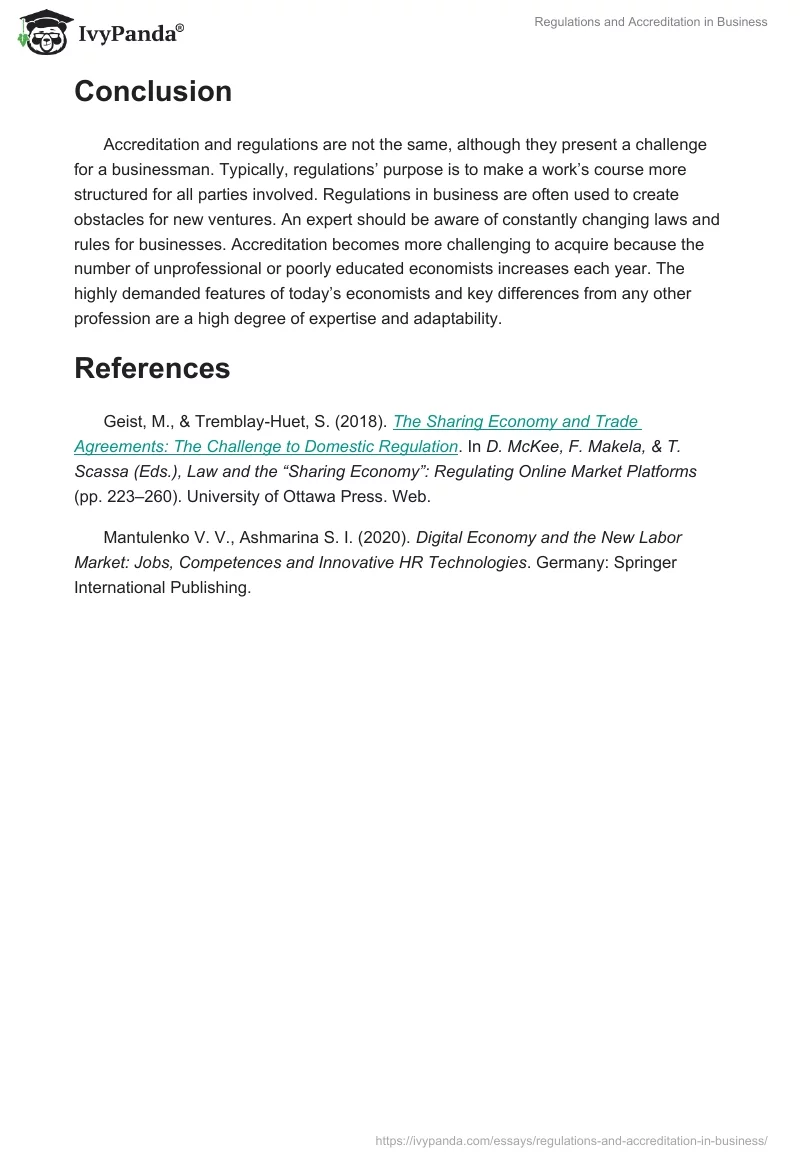Introduction
Although most people assume that accreditation and regulation are entities of one nature, there are vital differences between them. The regulations aim to make workers abide by the existing rules, meaning that they are implemented in the work process. However, it can be easily abused, especially on the market. Meanwhile, accreditation is a guarantee that no amateur specialist is allowed to enter the workspace. In most cases, it comes from a state and is necessary to start the work, making it formal. Regulations and accreditation play a significant role in business and the economy but have their distinctions: evolving regulations and new demands for an accredited specialist.
New Demands for an Economist and a Businessman
Today, many people have an interest in pursuing a career as an economist or simply in trade. There are regulations in different regions that an economist should now and adapt to their sporadic changes. Sometimes, rival companies and the state itself can oppose new businesses such as Uber under the agenda of safety (Geist, M., & Tremblay-Huet, S., 2018). The market favors the old companies and requires a new level of professionalism. However, a majority of new people in business and economists do not view accreditation as mandatory. That is why accreditation’s goal is to improve the education and credibility of the specialists, considering the approval of professional economists (Mantulenko V. V., Ashmarina S. I., 2020). Such measures create an unstable situation for new business people who endeavor harder to become experts and should be highly receptive to changes on the market.
Conclusion
Accreditation and regulations are not the same, although they present a challenge for a businessman. Typically, regulations’ purpose is to make a work’s course more structured for all parties involved. Regulations in business are often used to create obstacles for new ventures. An expert should be aware of constantly changing laws and rules for businesses. Accreditation becomes more challenging to acquire because the number of unprofessional or poorly educated economists increases each year. The highly demanded features of today’s economists and key differences from any other profession are a high degree of expertise and adaptability.
References
Geist, M., & Tremblay-Huet, S. (2018). The Sharing Economy and Trade Agreements: The Challenge to Domestic Regulation. In D. McKee, F. Makela, & T. Scassa (Eds.), Law and the “Sharing Economy”: Regulating Online Market Platforms (pp. 223–260). University of Ottawa Press. Web.
Mantulenko V. V., Ashmarina S. I. (2020). Digital Economy and the New Labor Market: Jobs, Competences and Innovative HR Technologies. Germany: Springer International Publishing.


